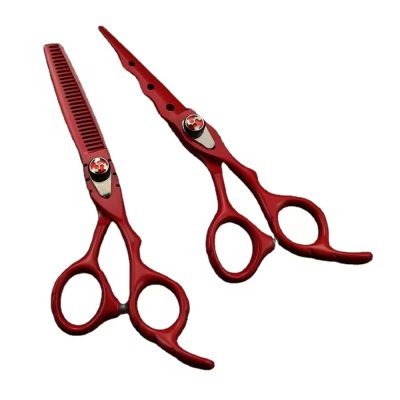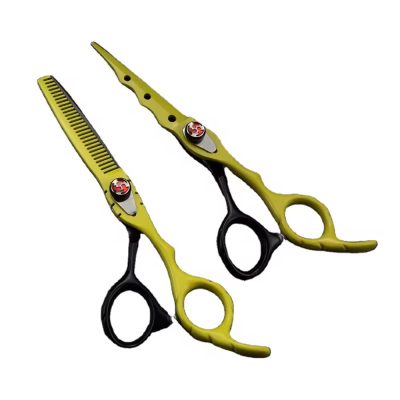Introduction
When selecting hair scissors, the blade material is a critical factor that influences the tool’s performance, durability, and maintenance needs. High-quality blade materials ensure sharpness, precision, and longevity, making them essential for both professional stylists and home users. In this blog post, we will explore the various types of blade materials used in hair scissors and their respective benefits.
Stainless Steel
Stainless steel is one of the most common materials used in hair scissors due to its excellent balance of sharpness, durability, and affordability. Stainless steel blades are resistant to rust and corrosion, making them easy to maintain and ideal for environments with moisture and chemicals. High-grade stainless steel, such as 440C or VG10, offers superior hardness and edge retention, ensuring that the scissors remain sharp and effective over extended use.
Japanese Steel
Japanese steel is renowned for its exceptional quality and performance in hair scissors. Types like ATS-314 and VG10 are favored for their superior hardness, sharpness, and durability. Japanese steel blades typically have a higher Rockwell hardness rating, ensuring that they maintain their sharp edge longer than other materials. The precision and smooth cutting action of Japanese steel blades make them a preferred choice for professional stylists who require reliable tools for intricate cutting techniques.
Cobalt Alloys
Cobalt alloy blades are known for their enhanced hardness and resistance to wear, making them an excellent choice for hair scissors. These blades combine the benefits of stainless steel with added cobalt to improve edge retention and overall durability. Cobalt alloy scissors are particularly suitable for heavy-duty use and cutting thick or coarse hair. They offer exceptional sharpness and longevity, reducing the need for frequent sharpening and replacements.
Titanium Coating
While not a blade material per se, titanium-coated scissors offer additional benefits that enhance the performance and lifespan of hair scissors. Titanium coating provides a protective layer that increases resistance to corrosion, wear, and chemical damage. This coating also reduces friction during cutting, resulting in smoother, more precise cuts. Titanium-coated scissors are lightweight and ergonomic, making them comfortable to use for extended periods.
Ceramic Blades
Ceramic blades are an alternative to traditional metal blades, offering unique advantages such as extreme sharpness and lightweight design. Ceramic blades are highly resistant to corrosion and maintain their sharp edge for an extended period. However, they are more brittle than metal blades and can chip or break if not handled carefully. Ceramic scissors are ideal for precision cutting and are often used for specific tasks rather than general hair cutting.
Conclusion
The blade material of hair scissors plays a crucial role in determining their performance, durability, and maintenance requirements. Stainless steel, Japanese steel, cobalt alloys, titanium coatings, and ceramic blades each offer distinct advantages that cater to different cutting needs and preferences. By understanding the properties and benefits of various blade materials, you can make an informed decision and invest in hair scissors that provide optimal results and longevity. Whether you’re a professional stylist or a home user, choosing the right blade material ensures that your scissors will deliver precise, reliable cuts for years to come.








